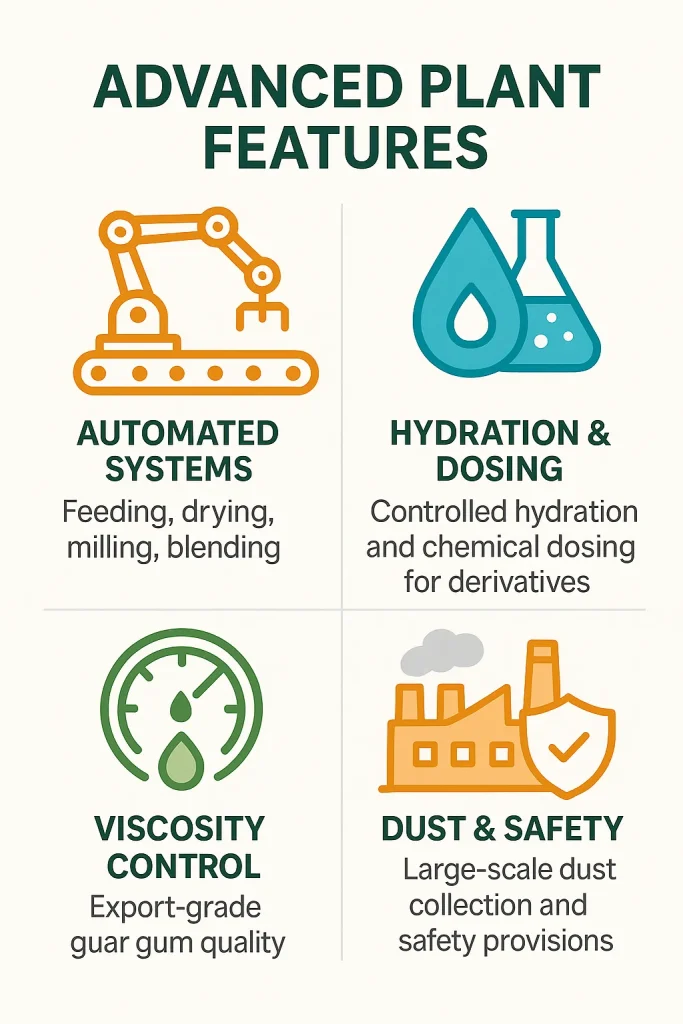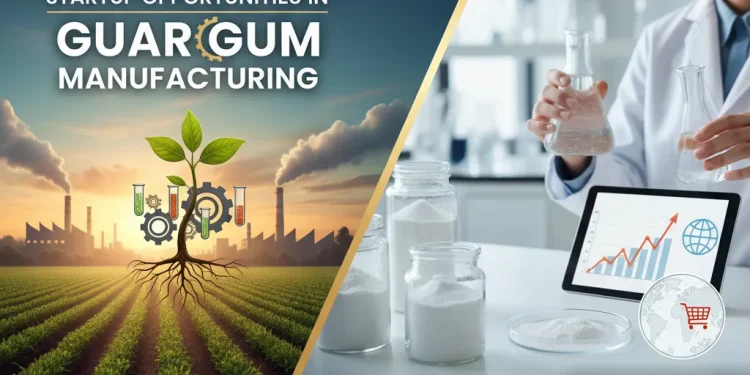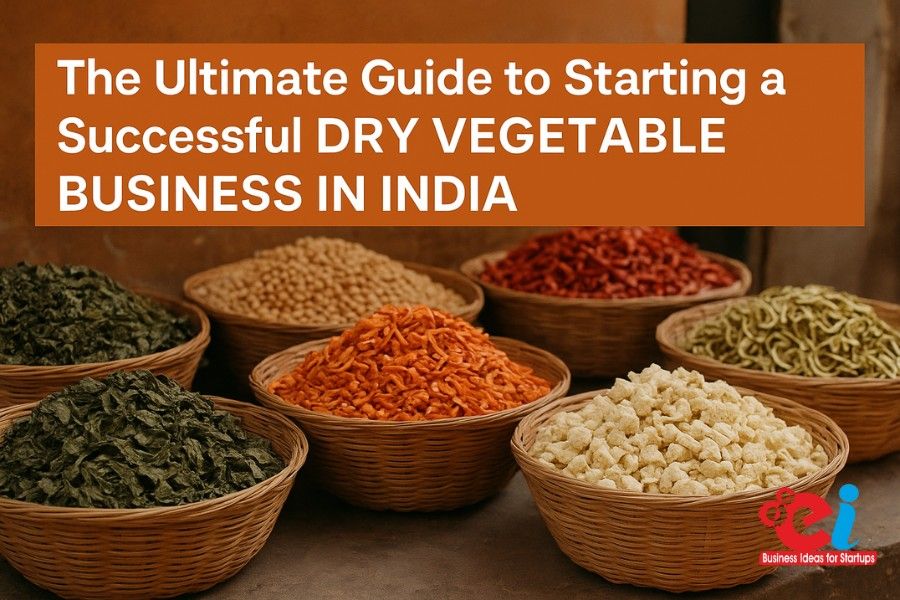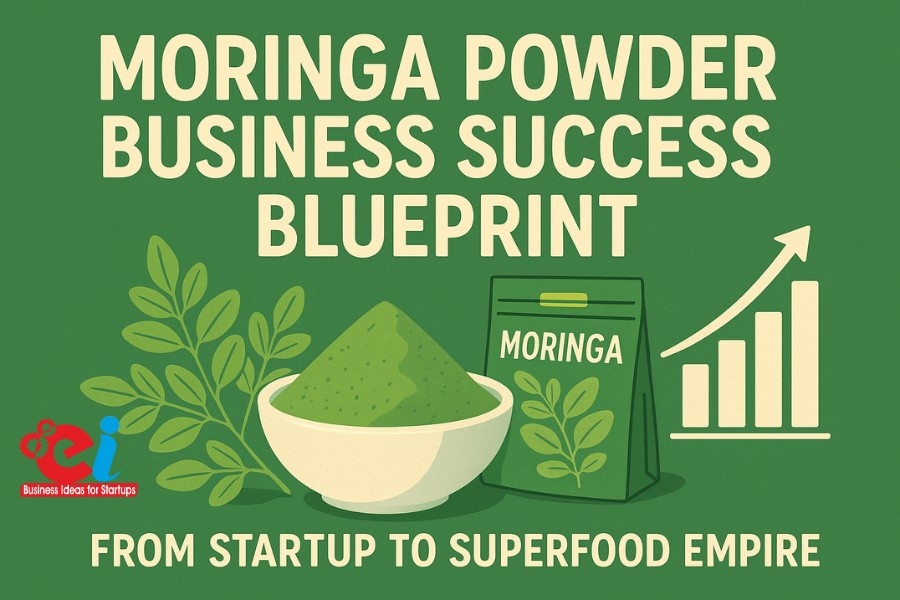India encompasses almost 80% of the world’s guar production and that too without any synthetic components that is used in food, pharmaceuticals, cosmetics, oil, and gas, among others. The demand is ever-growing and so are the profits of the guar gum exports.
Startups can virtually engage in any level of the value chain from food-grade powder to more advanced high value products. Furthermore, the government and trade bodies offer assistance in the form of policies, subsidies, and promotion on trade.
India holds guar gum manufacturing opportunities which untapped entrepreneurs are in search of.
Why Start the Manufacture of Guar Gum Now
Sizable Export Market – During the 2023-2024 fiscal year, India was able to export 418,000 MT of guar gum which gave the country over 540 million USD. The main consumers were the USA, Germany, Russia, Norway, and the Netherlands.
Support from Government – Within the Ministry of Commerce, SHEFEXIL is the body that works to promote the exportation of guar gum to SHEFEXIL. It provides support in market access, trade, and policy.
Diverse Uses – Guar gum is an ingredient in foods and drinks, medicines, cosmetics, and textiles, and is present in oil and gas, paper, and mining, creating diverse and profitable business opportunities for entrepreneurs.
Enhanced Products – Startups dealing exclusively with simple guar powder are confined to earning low profit margins. In contrast, there are more lucrative opportunities available, such as with cationic, oxidized, and hydroxypropyl guar, to cite more complex products.
Read More: One District One Product (ODOP): New Startup Ideas Backed by Government Support
Export of Guar Gum Trends
- 2020-21: 259,000 MT / 286million USD
- 2021-22: 379,000 MT / 517million USD
- 2022-23: 697,000 MT / 1,046billion USD
- 2023-24: 418,000 MT / 541millon USD
The successive years also reflect remarkable growth, bordering on exponential, as the figures show. These estimates point to the potential that a company could derive multiple benefits. New players in the field could easily tap into the profits on offer.
Demand Over All Sectors
The usage of guar gum seems almost endless, due to the sheer amount of demand there is, creating endless opportunities in range of different fields.
In the food industry, and especially the large scale food and beverage production, it is regarded as a thickening and stabilizing food additive in such wide variety of dairy and culinary creations as sauces, dairy products, bakery items, gluten-free offerings, ice cream, and ready to eat meals.
In such industries as pharmacy and personal care, as well as cosmetics, the gum is multifunctional as a binder, stabilizer of cream, lotion, and granules in tablets, and in addition serves the purpose of stabilizers in shampoos, and other cosmetics, as well as health supplements.
In the oil and gas industry its usage in guar gels and polymers becomes invaluable, as well as in the other apparatus for hydraulic fracturing, in drilling fluid, and in the oil and gas industry.
In the textile, paper and mining industries, it serves the purpose of completing the finishing touches on fabrics, enhancing the printability of certain slurries, binder slurries for industrial fabrics, and slurries used in textile printing and in mining operations.
Industries that are newly established or predicted to grow are nutraceuticals, bio-based adhesives, and biodegradable packaging.
Read More: 50 Successful MSME Business Ideas in India (2025 Edition)
Guar Gum Manufacturing Process
Seed Procurement and Cleaning
Raw Material: Guar seeds are obtained from guar plants which predominantly grow in Rajasthan and also in Gujarat, Haryana, Punjab and Madhya Pradesh.
Cleaning: The seeds are processed in air blowers, sieves and magnetic separators in order to separate dust, stones, dirt, and foreign materials.
Moisture Control: During storage seeds are dried to an appropriate moisture of eight to ten percent in order to avoid microbial growth.
Dehusking / Hulling
Process: The hulled seeds are processed in mechanical dehullers in order to separate and remove the outer husk (the seed coat).
Purpose: The endosperm has the galactomannan polysaccharide which is the guar gum. The husk is a by-product.
Splitting
Process: The dehusked seeds are split in a mechanical splitter, which isolates the endosperm (the guar splits) from the germ (which is utilized for animal fodder or oil extraction).
Purpose: The main component for guar gum production is the endosperm.
Sieving / Grading
Process: The splits are classified and graded by dimension and split quality using vibrating sieves and screens.
Purpose: Damaged or broken splits are removed and uniform particle size is attained.
Hydration / Soaking
Process: Guar splits are immersed in water or an alkaline solution for a certain time period.
Purpose: Softens the splits and separates the galactomannan-rich endosperm from the fiber residues.
Drying
Procedure: The hydrated splits are dried in hot air or rotary dryers until the moisture content is in the range of 12% to 14%.
Objective: The reduction of moisture content as indicated helps in stabilization of the material, avoiding microbial growth, and easing the materials’ milling process.
Read More:
Flaking or Grinding
Flaking: The endosperm shreds which are dried are shaped into shreds/flakes by a set of flaking rollers.
Grinding: The flakes are then crushed into a fine powder by hammer, or pin, mills.
Objective: Powdered guar gum of a desired viscosity and particle size are produced.
Polishing or Fine Screening
Procedure: Heavily classified powders are sieved to remove the remaining coarse particles.
Objective: Attainment of uniform and smooth texture ready for both industrial and food-grade applications.
Derivative Production (Optional)
For valuable derivatives such as oxidized guar, cationic guar, or hydroxypropyl guar:
Etherification: Hydroxypropylation to improve stability and solubility by introducing hydroxyl groups.
Quaternization or cationization: cationic groups are attached for applications in cosmetics and personal care.
Oxidation: For industrial and oilfield purposes, oxidized guar is produced.
Drying and Powdering: The uniform modified end product is dried, milled and then sieved.
Particle Size Control & Quality Testing
Procedure: Final guar gum powder is classified to reach a targeted particle size by air classifiers.
Quality Control: This includes measuring ash content, moisture, microbial load, viscosity, and determining the percentage of galactomannan.
Packing
Guar gum is placed in moisture-proof, air-tight bags (typically, 25 kg bags or 50 kg bags).
This process assists in maintaining quality during transport and after storage. Packed and ready for domestic or export shipping.
Read Our Book: Click Here
By-Products Handling
Guar Germ: Extracted during splitting, which can be processed for chrome guar gum oil.
Husk / Residues: Used as animal feed, as well as fertilizers, or as fuel in boilers.
Guar Meal: Rich in protein, it is commonly used in livestock feed.

Advanced Plant Features
- Automated feeding, drying, milling and blending systems.
- Hydration and chemical dosing control for derivatives.
- Viscosity control systems for export-grade guar gum.
- Large scale surface dust collection and safety provisions.
Opportunities for a Start-Up in Guar Gum
New startups can employ a multitude of scalable approach:
- Food Grade Guar Gum Powder: Guar gum export demand in the United States of America, Western Europe, and the Middle-East has been identified as expanding and profitable, with no competing domestic powders available.
- Personal Care Derivatives: Cosmetics, personal health and wellness products all over the global market hold and sustain generous profit margin.
- Oilfield Guar Products: While economically cyclical, the demand for guar products during ‘upcycle’ periods in drilling possesses high volume and demand.
- Organic & Specialty Guar: Premium guar gum and derivates are exported to the United States of America, European Union and other high specialty food countries.
- Integrated Seed-to-Split Operations: Controlled production of low cost guar gum of the highest quality is achieved through the processing of in-house guar gum.
- Value Added Products: Guar gum can be used to create nutraceutical products, flours, and food mix systems.
Read Our Project Report: Click Here
Key Growth Drivers
- The availability of the raw materials is guaranteed, for India makes 80% of the world’s production.
- There is a rapid rise in demand for cleaner, more natural, and sustainable ingredients.
- Government support in the form of export and trade is available due to the SHEFEXIL.
- Derivative innovations within profit margins of Oil & Gas, cosmetics and pharm are abundant.
Due to all of the factors mentioned, guar gum is a highly desirable and lucrative opportunity for entrepreneurs who are ready for export.
Guar Gum Manufacturing: How NPCS Can Help You
NPCS has been instrumental in assisting new businesses in the guar gum manufacturing industry by preparing meticulously devised Market Survey cum Detailed Techno Economic Feasibility DPRs.
These documents provide a complete roadmap for startups, including detailed manufacturing and derivative processes, market research with export demand analysis, process flow diagrams and plant layouts, optimal product mix and capacity planning, machinery and raw material sourcing strategies, and comprehensive financial projections covering ROI and profitability.
In addition, we synchronize the projects with NABARD loans to secure low-cost financing, and with government export subsidies to facilitate access to vital infrastructure and tax incentives.
In this way, we assist other companies in mitigating their entrepreneurial risks as well as saving time and confidently expanding their operations to reach international markets.
Find the Best Idea for Yourself With our Startup Selector Tool
Conclusions: India as a goldmine for Guar Gum Manufacturing
Policy support, along with the ever-growing demand for exports and abundance of raw materials makes the guar gum industry in India one of a kind. Hence, along the value chain, new companies can target food-grade, personal care, oilfield, as well as organic and integrated processes.
Additionally, the support given by NPCS, government subsidies, and the ability to reach international markets, enables founders to access one of the fastest growing industrial sectors in India with strong, profitable export ready businesses (Guar Gum Manufacturing).
Guar Gum Manufacturing FAQs
Q: What industries utilize guar gum?
A: In the food, pharmaceutical, cosmetic, textile, oil and gas, as well as the paper industries.
Q: What are the states in India which cultivate Guar?
A: Rajasthan, Gujarat, Haryana, Punjab, UP, MP, Tamil Nadu, Maharashtra, Karnataka, and Andhra Pradesh.
Q: Can startups easily export guar gum?
A: Of course, SHEFEXIL alongside the supportive government policies assists in India’s dominance in global export.
Q: What other products can I manufacture apart from guar powder?
A: Derivatives such as hydroxypropyl guar, cationic guar, oxidized guar, and guar meal.
Q: What is the role of NPCS in guaranteeing profitable gum business?
A: NPCS assists in minimizing the risk, optimizing export, and administering DPRs, Market Study, Process Engineering, Financials, and Guidance on Government Schemes.

























